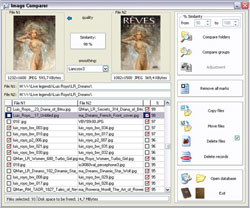This unique way of displaying your art reminds me of the old dark room days of hanging your prints up to dry. I know that clients of ours have done similar installations where they have tension mounted wire from wall to wall and hung prints mounted on plexiglas or sandwiched in glass from the wire like a trapeze. Since I don't have pictures to share of that (Hint, hint, to our photog's), this write up from
HGTV is the best way I have found to illustrate the effect.

Display art and photos on a wall with clothesline. Attach a length of rope to a long bare wall, select your favorite photos, postcards, prints or artwork and clip to the clothesline.
 We are a big fan of FilmLoop. We have utilized their software on our site to showcase the posters we offer from Russo and Steele vintage cars. It is an amazing service, and it's free!
We are a big fan of FilmLoop. We have utilized their software on our site to showcase the posters we offer from Russo and Steele vintage cars. It is an amazing service, and it's free!











